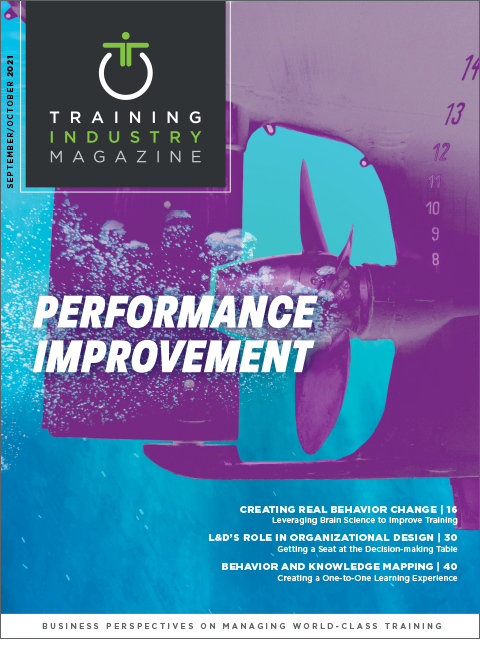
Published in Sept/Oct 2021
When most people think about personal or organizational performance, they think about setting and hitting target goals. If this were as simple as it sounds, why do most people have trouble performing at their best?
According to Keller and Schaninger at McKinsey & Co., “Performance is what an enterprise does to deliver improved financial and operational results for its stakeholders.” But focusing solely on performance will not bring about the changes that organizations want. Instead, performance metrics must also be accompanied by a consideration of how effectively people work together to pursue a common goal. Called “organizational health,” this factor goes hand-in-hand with performance and refers to an organization’s level of internal alignment, quality of execution and capacity to renew itself to sustain high performance in an ever-changing external environment.
Alignment, execution and innovation remain challenges, especially at a time that is being called “the great resignation.” Insights gleaned from brain science may offer a perspective in optimizing organizational health that truly helps people to enhance their performance when applied artfully:
- Efficient task execution requires brain synchrony, which is highly dependent on the quality of attachment between team members.
- Movement can improve cognitive performance.
- Deliberate practice is far less impactful on performance than we think. There are often remarkable differences between two people who practice for the same amount of time. In fact, it accounts for less than 1% of performance when it comes to many forms of work.
Looking at these factors, organizations can explore scalable programs that enhance attachment, promote movement and go beyond practice.
Attachment
Based on the team attachment levels, a program to strengthen interpersonal connection and psychological safety is likely to enhance performance, given that improving attachment also improves performance.
Questions to ask:
- Does it seem like people on the team are synchronized and safe to connect?
- Is this team-specific or part of the culture?
- How can I design a program to facilitate attachment and psychological safety?
For example, one program that I designed required leaders to identify how they might be negatively impacting team attachment with their hierarchical styles and performance measures, and how they could adjust their approach by measuring team KPIs instead of focusing their efforts on individuals only.
Movement
Frequent breaks can reinvigorate the brain, and there are several things that companies can do to enhance the chances of this happening.
Questions to ask:
- Have we designed spaces so that people can move or walk about with ease?
- Have we made movement a cultural norm by encouraging people to stand or walk about during meetings?
- Have we run programs on the importance of these movement breaks, and do people understand the difference between walking around the block, versus walking on a curvy path? The latter will enhance creativity.
Deliberate practice
Training programs must involve more than mere practice.
Questions to ask:
- Have we incorporated feedback mechanisms? Is the practice meaningful?
- Is the experience of the practice enjoyable?
- Has the goal of agility been incorporated? Ruthless prioritizing, for example, would help people understand how to rearrange their days to complete what is possible.
Overall, performance enhancement in humans would benefit from a multipronged approach, which brain science may significantly inform in measurable ways.
